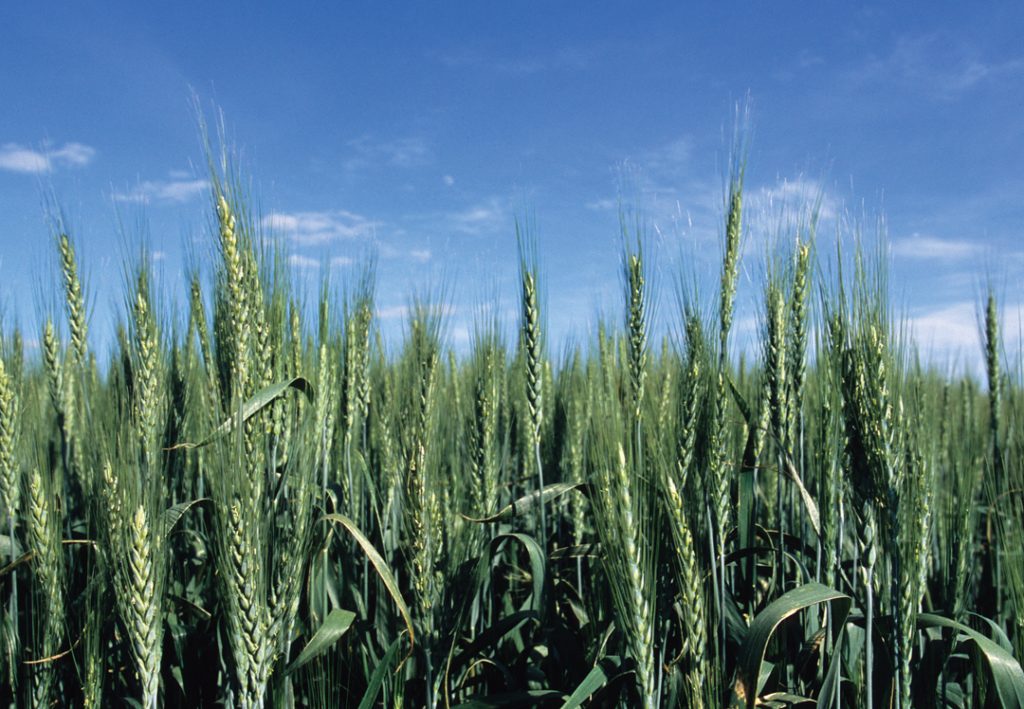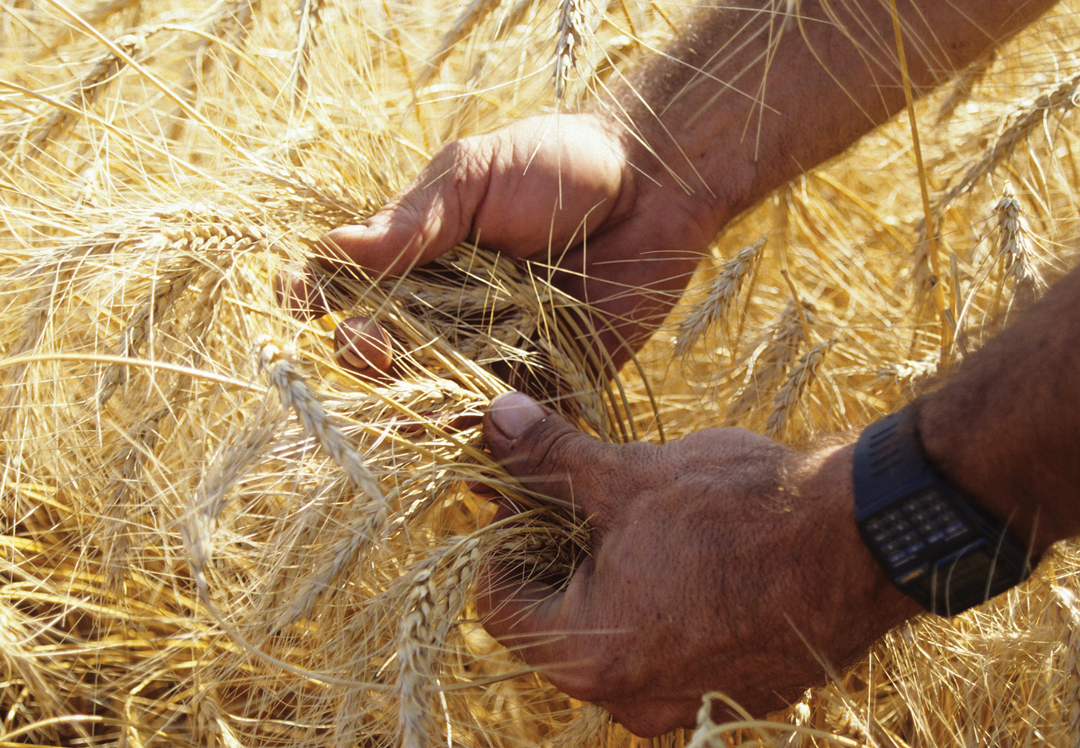A RECIPE FOR HOT CEREAL
BY GEOFF GEDDES • PHOTO COURTESY OF DUCKS UNLIMITED CANADA
Farmer interest in various crops heats up and cools down from year to year. One crop that consistently gets the cold shoulder, however, is winter wheat. This has prompted some to ask why, and how can we break the ice in making winter wheat a hot commodity.
“In Western Canada, winter wheat represents a fairly small share of total wheat production,” said Daniel Ramage, director of market development for Cereals Canada. “Alberta is a prime example as winter wheat accounts for just over one per cent of all wheat grown in the province. Those small volumes affect how winter wheat can be used. At present, the crop is primarily employed as a cost cutter to be blended with other wheat varieties in milling, as well as for feed and ethanol.”
Statistics Canada estimated total Prairie plantings at 250,000 acres in 2018, down from 335,000 acres in 2017 and 535,000 acres in 2016. To understand the limited state of winter wheat production today, it’s important to consider both economics
and agronomics.
YIELDING RESULTS
“Historically, the yield advantage of winter wheat meant good returns for farmers, even with a discounted price,” said Paul Thoroughgood, regional agrologist for Ducks Unlimited Canada. “Unfortunately, the gap between winter and spring wheat has widened in recent years, causing seeding efforts around winter wheat to decrease.”
From an agronomic standpoint, the challenges of growing winter wheat are twofold. “With longer-season canola varieties taking up more of the growing season, and some challenging conditions in the fall in recent years, producers are not getting their crops off as early as they’d like to,” said Jeremy Boychyn, agronomy research extension specialist for the Alberta Wheat Commission. “This makes it more difficult to get a fall-seeded crop like winter wheat in as its ideal seeding window is prior to the end of September.”
The necessity of seeding winter wheat into stubble presents another obstacle for farmers. “Canola is the best stubble for winter wheat. Silage barley and peas are also good options, but beyond that, there are limited choices when seeding winter wheat in Alberta,” said Boychyn. “If you don’t have the proper stubble you’re not likely to grow winter wheat.”
In spite of the roadblocks, winter wheat holds appeal for a number of farmers and there is a strong case for raising its profile as a crop option.

REAPING REWARDS
“Adding winter wheat to the rotation in Western Canada provides many agronomic benefits,” said Boychyn. “Having another cereal in the rotation—especially one seeded in the fall—can help capture some of that spring moisture, so farms need not do all of their seeding in the spring. Spreading out the work that way helps farmers get all their crops in the ground. It can also help reduce weed resistance development through winter wheat’s increased early season competitiveness.”
Winter wheat also acts as an ally against certain pests, where farmers will take all the help they can get. “If we move the time of flowering from spring wheat to winter wheat, it doesn’t match up as well with Fusarium head blight and wheat midge timing,” said Boychyn. “Winter wheat adds complexity and diversity to a farming system and decreases the number of potential pest control inputs we need to develop crops. It also brings diversity to the ecosystem, which benefits Alberta as a whole. As well, winter wheat can yield 15 to 40 per cent more than other crops, giving you the potential for higher margins and profits in the right market.”
Growing crops in the winter also reduces the risk of erosion from wind
and water.
MEETING MILLING NEEDS
One sector already sold on winter wheat is the Canadian milling industry, which utilizes it in a range of products including cakes, cookies, crackers and pizza dough.
“Millers use a relatively large percentage of winter wheat because of its availability, cost and quality,” said Lisa Nemeth, director of markets for the Canadian International Grains Institute (CIGI). “It’s typical both in Canada and around the world that when you mill, you are blending wheat to achieve the end-flour quality you want at the lowest possible price. Canadian Western Red Spring wheat is the most expensive and has the highest protein levels, so if you don’t require that much protein, you could blend in a more cost-effective option like winter wheat and still meet the end-product needs.”
Of course, deriving positive impact from winter wheat requires the critical first step of adding it to the rotation. Making that prospect more attractive is the focus of the Cereals Canada winter wheat market development committee, which is bringing together winter wheat growing groups from across Western Canada to explore domestic marketing opportunities.
“We have met with everyone up the value chain from the farmer such as grain handlers, millers and bakers to gather impressions and interest around leveraging the environmental benefits of winter wheat,” said Thoroughgood.
Those benefits include providing nesting habitats for ducks and other wildlife. Extensive research by Ducks Unlimited indicates that western Canadian winter wheat produces greater nesting success than any other crop type.
“Consumers today are looking for those kinds of feel-good environmental stories,” said Ramage. “We think there are opportunities to differentiate and add value to winter wheat through such attributes, using approaches like eco-labelling. It’s rare to have marketing options like this with wheat. It all comes down to whether we can bring the right stakeholders together across all links of the supply chain to capitalize on this opportunity.”
There is much more to be done on this front, but the committee is headed in a productive direction. “We participated in research efforts with three Prairie winter wheat commissions and saw some interesting results,” said Thoroughgood. “In focus group work, a third of participants were willing to pay a premium for winter wheat marketed in this way, and the rest would buy it, just not for an added cost. We saw the feedback from the groups as a real positive. I think generating some concrete results for winter wheat will take longer than we hoped as there are a lot of moving parts, but I think we are on the right track.”
Cigi also does its part to promote winter wheat through technical support of marketing efforts. If a winter cereals group wants to promote winter wheat, Cigi can provide support by analyzing composite samples and determining its overall quality in a given year. “Those results give us a baseline of quality that we can use to compare with other winter wheat from around the world and understand how the Canadian version stacks up to the competition,” said Nemeth. “We also present information on winter wheat to incoming groups so they see where it fits in the portfolio of all wheat classes in Western Canada.”
Finding hot prospects for winter wheat is an ongoing challenge, but promoting an increase in demand and total acres may be well worth the effort for farmers, millers and consumers.







Comments